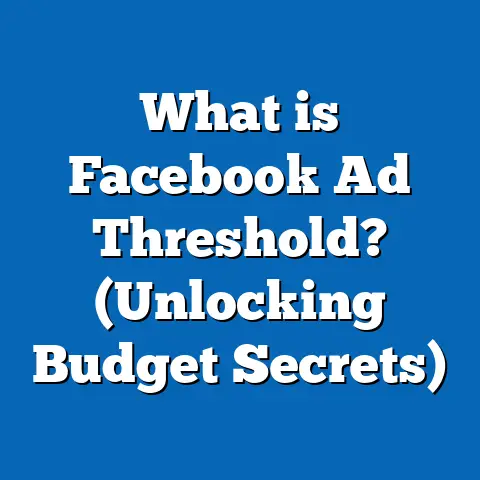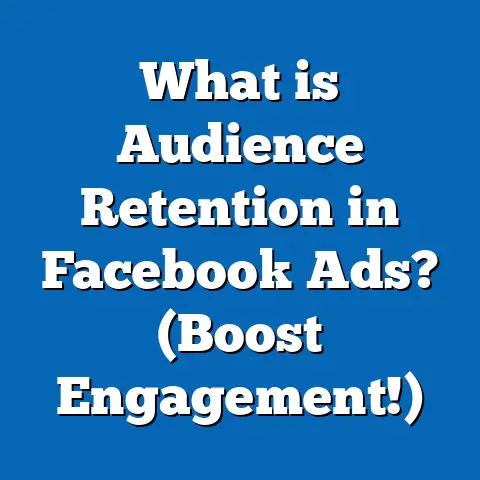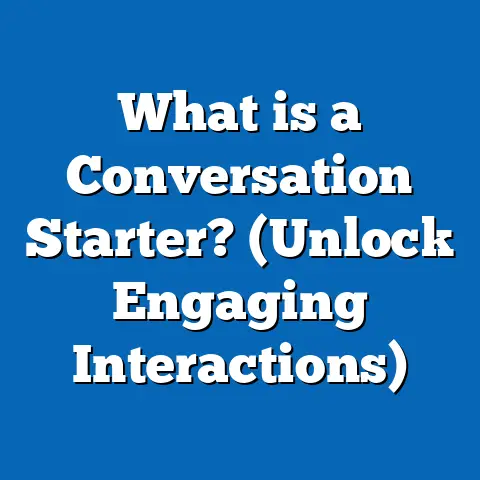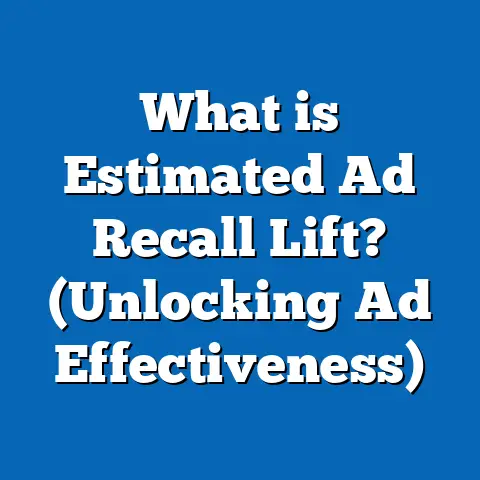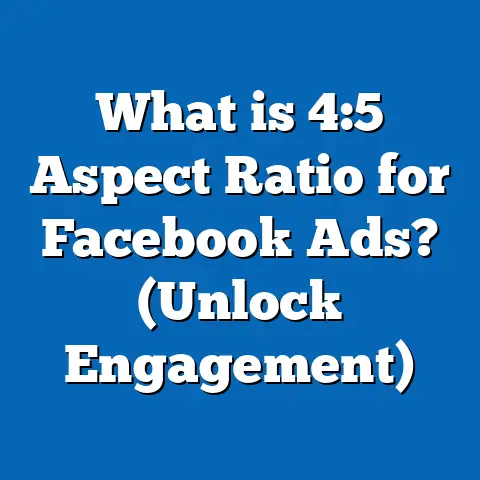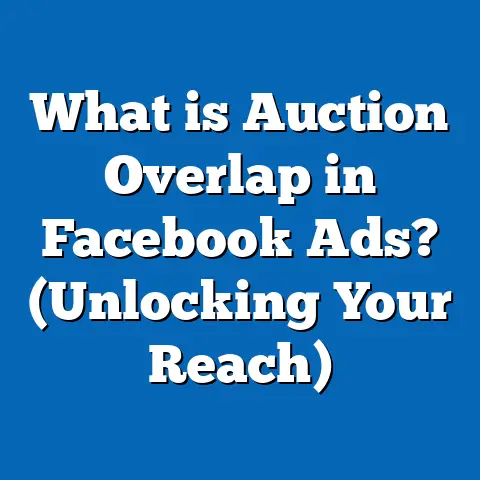What is Behavior in Facebook Ads? (Unlock Targeting Secrets)
Introduction: How I Discovered the Power of Behavior Targeting on Facebook Ads
A few years ago, I was managing digital marketing for my eco-friendly product line. Despite investing heavily in Facebook ads, the results were underwhelming. My targeting strategy was basic — mostly demographics like age, gender, and broad interests such as “environmentalism” or “sustainable products.” Yet, sales barely moved.
One day, while researching advanced targeting options, I found behavior targeting — a feature allowing advertisers to reach users based on their real-world actions and digital habits. Skeptical but hopeful, I redesigned my campaigns to focus on behaviors such as “recent online buyers of eco-friendly products” and “users who frequently shop premium brands.”
Within weeks, engagement rates skyrocketed. My ads were no longer showing to just anyone interested in sustainability but to people who had already demonstrated buying behaviors aligned with my niche. The return on ad spend (ROAS) tripled in three months.
What Is Behavior Targeting in Facebook Ads?
Defining Behavior Targeting
Behavior targeting is an advanced Facebook advertising feature that allows you to target audiences based on their past actions rather than just demographics or interests. Unlike interests that indicate what users like or follow, behavior targeting focuses on what users actually do.
For example:
- Have they recently purchased a product online?
- Do they travel frequently?
- What kind of devices do they use?
- Are they gamers or media consumers?
Facebook collects this data from user activity inside and outside its platform to create behavior segments advertisers can target.
Why Behavior Targeting Is a Game Changer
Behavior targeting goes beyond assumptions. It’s rooted in data about real actions and purchase intent, allowing marketers to reach users more likely to convert.
Key data points:
- According to Facebook’s internal research (2023), behavior-targeted campaigns see up to 70% higher engagement rates than interest-only campaigns.
- WordStream’s 2024 analysis found that advertisers leveraging behavior data experienced a 50% lift in conversion rates on average.
- Brands using behavior targeting reported up to 35% lower cost per acquisition (CPA) compared to broad targeting.
These numbers highlight why behavior targeting should be part of every serious advertiser’s toolkit.
How Facebook Collects Behavioral Data: A Deep Dive
On-Platform User Activity
Facebook tracks everything users do on its platforms — Facebook, Instagram, Messenger, WhatsApp — including:
- Pages liked or followed
- Videos watched (length and frequency)
- Posts shared or commented on
- Interactions with ads
- Marketplace browsing activities
This rich dataset forms the backbone of behavior segments.
Off-Platform Data Collection
Facebook also uses tools like the Facebook Pixel installed on millions of websites and integrated SDKs in apps to track user actions outside its platforms:
- Product views
- Cart additions
- Purchases
- App installs and usage patterns
This allows Facebook to correlate online shopping and app behaviors with user profiles.
Third-Party Partner Data
Facebook partners with data aggregators who collect offline purchasing behaviors through loyalty programs, subscription services, public records, etc. This adds depth to behavioral profiles.
Device and Network Data
Information about device type (iPhone vs. Android), OS version, network type (Wi-Fi vs. cellular) is also tracked to segment users based on technology preferences.
Privacy Protections and Limitations
While Facebook collects extensive data, it anonymizes and aggregates user information before making it available for targeting. Advertisers only see segments without identifying individuals.
Facebook also adheres to privacy regulations like GDPR and CCPA by limiting certain data collection and giving users control over ad preferences.
Purchase Behavior
Purchase behaviors are some of the most powerful as they indicate clear intent or recent buying activity.
- Recent Purchase Categories: Users who recently bought electronics, apparel, beauty products, etc.
- Spending Habits: High spenders vs bargain hunters.
- Online vs Offline Buyers: Those who shop primarily online vs in physical stores.
- Device Purchase Types: Recent buyers of mobile devices or accessories.
Example: A brand selling premium headphones can target “recent electronics buyers” to capture users already in a tech-buying mindset.
Travel Behaviors
Travel-related behaviors are valuable for travel agencies, hotels, airlines, and related businesses.
- Frequent travelers (based on flight bookings)
- Airport visitors (tracked via mobile location data)
- Commuters or daily travelers
Example: An airline might target “frequent travelers” who have visited airports multiple times in the past month.
Digital Activities
This includes user engagement with digital content and apps:
- Video game players (casual vs hardcore)
- App downloaders segmented by category (health, finance, education)
- Media consumption habits such as frequent video watchers
Example: A mobile game developer can target “active video game players” who engage daily on gaming apps.
Device Usage
Target based on the technology users have:
- Operating system (iOS or Android)
- Device type (smartphone vs tablet)
- Network connection (Wi-Fi vs cellular)
Example: An app optimized for iOS devices can exclude Android users by targeting only iOS device users.
How to Use Behavior Targeting Effectively in Facebook Ads Manager
Step-by-Step Setup Guide
- Create Campaign: Start by opening Facebook Ads Manager and selecting your campaign objective aligned with your goal (e.g., conversions, traffic).
- Go to Audience Section: In the ad set level, navigate to “Audience.”
- Detailed Targeting: Click “Edit” under detailed targeting.
- Browse Behaviors: Choose “Browse” → then select “Behaviors.”
- Pick Relevant Behaviors: Select behaviors that align closely with your product or service.
- Combine With Other Targeting: Layer behaviors with demographics (age, gender) or interests for refined targeting.
- Exclude Irrelevant Audiences: Use exclusions to filter out current customers or uninterested users.
- Set Budget and Schedule: Allocate your budget and set campaign duration.
- Launch & Monitor: Start your campaign and regularly analyze performance metrics.
Best Practices for Behavior Targeting Setup
- Start Broad and Narrow Down: Begin with broad behavioral categories then refine based on data.
- Use Lookalike Audiences: Build lookalikes from custom audiences combined with behaviors.
- Test Multiple Segments: Run A/B tests comparing different behavior segments.
- Monitor Frequency: Avoid ad fatigue by limiting excessive frequency within behavior groups.
Case Studies: Real Success Stories Using Behavior Targeting
Case Study 1: Apparel Brand Boosts ROAS by 240%
A mid-sized apparel brand struggling with high CPA shifted from interest-only targeting to behavior-based campaigns focusing on “recent online fashion buyers.”
Results after 2 months:
- ROAS increased by 240%
- CPA dropped by 35%
- Engagement rate up 60%
The brand layered behavior targeting with lookalikes for further precision.
Case Study 2: Travel Agency Increases Bookings by 45%
By targeting “frequent travelers” combined with airport visitors using mobile location data, a travel agency saw:
- 45% increase in flight bookings
- 30% decrease in cost per booking
- Improved ad relevance score by 15%
Case Study 3: Mobile App Achieves 3X User Acquisition
A gaming app used behavior targeting for “frequent video game players” on iOS devices paired with retargeting past installers.
Outcomes:
- User acquisition tripled
- Lowered cost per install by 40%
- Increased in-app purchases by 25%
Comparing Behavior Targeting with Other Facebook Targeting Options
| Targeting Type | Definition | Advantages | Limitations |
|---|---|---|---|
| Demographic | Age, gender, education level | Easy to use; large audience reach | Low intent; broad |
| Interest | Based on user’s declared or inferred interests | Good for awareness; broad categories | Less precise; may have low conversion |
| Behavior | Based on user’s actions & purchase history | High intent; better conversion rates | Smaller audience; requires testing |
| Custom Audiences | Upload your own customer lists | Best for retargeting | Limited to existing customers |
| Lookalike Audiences | Users similar to your existing customers | Expands reach effectively | Requires quality source audience |
Advanced Strategies for Maximizing Behavior Targeting Impact
Combine Behavior Targeting with Custom Audiences
Upload your customer email or phone lists into Facebook. Then use behavior targeting alongside to find new users similar in actions to your best customers.
Layer Behaviors with Interests and Demographics
Narrow down your audience by combining behaviors like “recent online buyers” with interests such as “fitness” for sports apparel campaigns.
Use Exclusion Lists Wisely
Exclude past purchasers or irrelevant segments so you avoid wasting budget showing ads to uninterested users.
Leverage Retargeting Funnels
Start by targeting broad behavioral segments at awareness stage then retarget engaged users with more specific offers.
Optimize Through A/B Testing
Run split tests comparing multiple behavior segments to identify which ones produce the highest ROAS or engagement.
Common Mistakes Marketers Make with Behavior Targeting
- Over-segmentation: Creating too narrow behavior segments leads to tiny audiences that limit ad delivery.
- Ignoring Combinations: Relying solely on one targeting type instead of layering behaviors with interests/demographics.
- Neglecting Exclusions: Not excluding converted customers wastes budget.
- Not Updating Audiences: Failing to refresh behavior selections as market conditions change.
- Overlooking Testing: Not testing different behavior groups results in missed opportunities.
- Assuming Behaviors Are Static: Behaviors evolve; retarget accordingly.
The Future of Behavior Targeting on Facebook: Trends to Watch in 2024+
- Stricter Privacy Controls
With ongoing regulation and Apple’s ATT updates limiting tracking, Facebook is adapting by using aggregated signals and AI models. - More Granular Behaviors
Expect more specific behavioral categories such as environmentally conscious buyers or subscription service users. - AI-Powered Audience Suggestions
Facebook increasingly uses AI to automatically suggest high-performing behavior segments based on your campaign data. - Cross-platform Attribution Improvements
Better tracking across devices and platforms will enhance behavior segment accuracy. - Integration with Augmented Reality Ads
Behavior data will inform AR ad experiences tailored to user habits.
Practical Examples: Applying Behavior Targeting Across Industries
Retail & E-commerce
Target recent buyers of specific categories or frequent online shoppers during holiday seasons for flash sales.
Travel & Hospitality
Reach frequent domestic travelers or airport visitors with tailored offers based on travel behaviors.
Technology & Apps
Target device-specific behaviors like iPhone users who frequently download productivity apps.
Entertainment & Media
Reach video game players or heavy video watchers with relevant content promotions.
Measuring Success: Key Metrics for Behavior-Based Campaigns
Tracking performance is critical for optimization:
- Click-through Rate (CTR): Measures engagement level.
- Conversion Rate: Measures how many users complete desired actions.
- Cost Per Acquisition (CPA): Cost efficiency metric.
- Return On Ad Spend (ROAS): Revenue generated per dollar spent.
- Frequency: Ensures ads aren’t over-shown causing fatigue.
- Relevance Score/Ad Quality: Indicates ad resonance with targeted behaviors.
Use tools like Facebook Analytics and Ads Manager reports to monitor these metrics closely.
Step-by-Step Checklist for Launching a Behavior Targeted Campaign
- Define clear campaign goals.
- Analyze customer purchase history and behaviors.
- Open Facebook Ads Manager → Create Campaign.
- Select campaign objective aligned with goals.
- Navigate to Detailed Targeting → Choose Behaviors.
- Combine behaviors with demographics/interests.
- Exclude irrelevant or converted audiences.
- Set realistic budget & schedule.
- Design compelling creative tailored to behavior segment.
- Launch campaign & monitor performance daily.
- Optimize bids, creatives & audiences based on results.
- Scale successful campaigns cautiously.
- Refresh behavioral segments periodically.
- Document learnings for future campaigns.
Summary: Unlocking the Power of Behavior in Facebook Ads
Behavior targeting unlocks a new level of precision by focusing on what users actually do rather than just who they are or what they like. Leveraging this capability allows marketers and business owners to:
- Reach high-intent audiences ready to convert
- Lower advertising costs through precise targeting
- Increase engagement rates with relevant ads
- Build richer retargeting funnels
- Stay competitive amid evolving digital landscapes
By understanding the data sources, categories of behaviors available, setup techniques, practical applications, common pitfalls, and future trends outlined here, you can confidently implement behavior targeting into your Facebook ad strategy — driving measurable business growth.
If you want me to provide supplementary materials such as downloadable templates for audience research or campaign tracking sheets tailored specifically for behavior targeting, just let me know!

